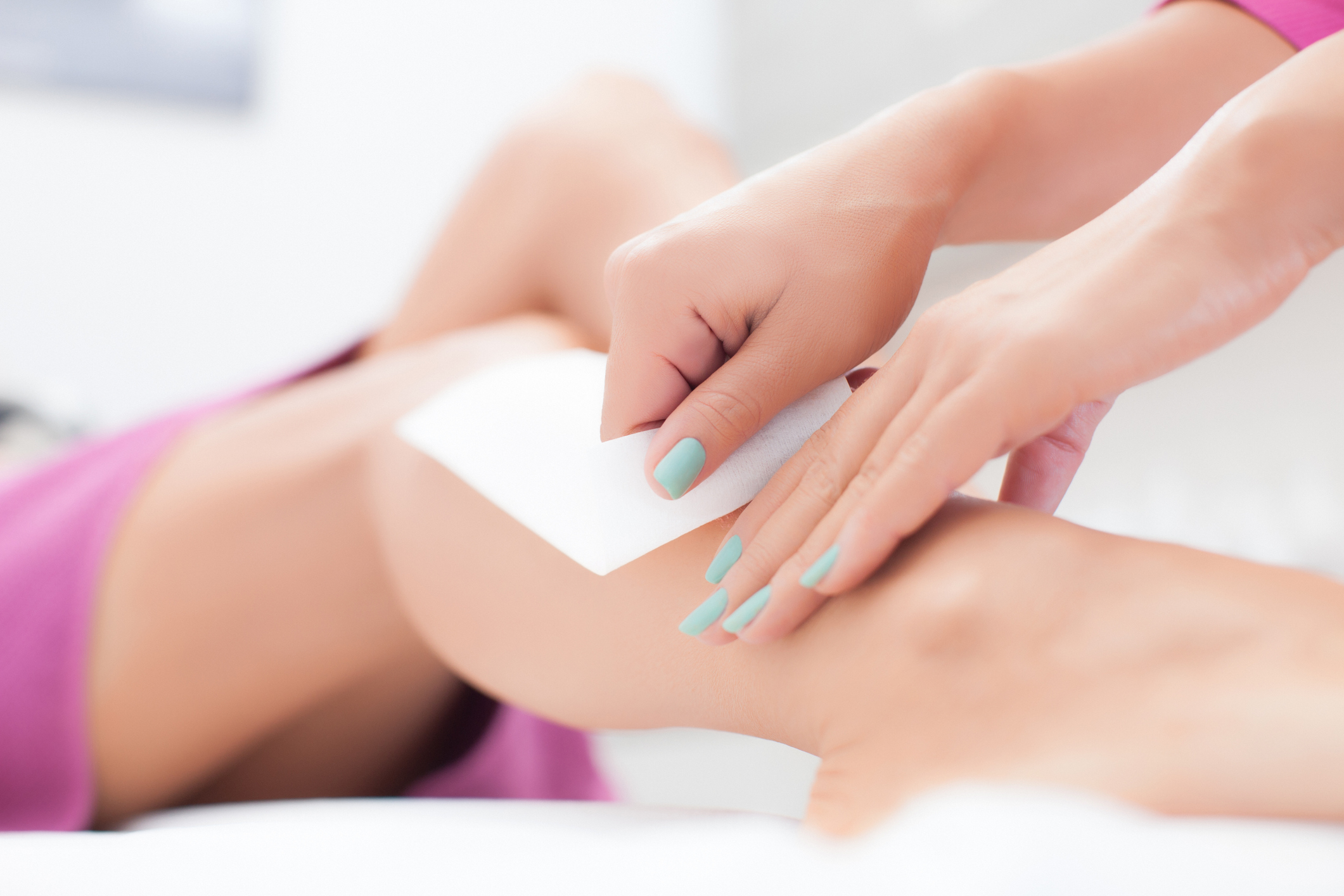Wax On, Wax Off - The Basics of Hair Removal
10 Things to Know About This Sticky Business
With summer approaching we’re all thinking about all the skin bearing outfits we’ll be wearing, which also means we’re thinking about keeping our legs, underarms, and bikini area smooth, silky and hair-free.
Waxing is the most economical way to remove hair from large (and somewhat sensitive) areas of your body. But it is not without it challenges — we all remember the agony of Steve Carrell’s character in “The 40-Year Old Virgin” to know how horribly wrong things can go.
Which is why we’ve put together these 10 tips to help ensure you get the smooth (virtually pain-free) results you want.
1.
Wax Matters: Soft vs. Hard
You’ve probably seen several pots of waxes at your local salon, but generally these epilation waxes breakdown into two types: soft or hard.
Hard Wax - this wax hardens as it cools, and it’s removed by peeling up an edge and pulling the entire strip of wax off.
Hard wax:
Is perfect for removing shorter or curly hairs from small areas (face, toes, ears), and for touching up a bikini wax
Doesn’t adhere to the skin making it slightly less painful when it’s removed
Can be re-used to remove stubborn hairs in the same area
Is more expensive than soft wax
Soft Wax - remains slightly tacky as it cools after being applied to the skin. Soft wax is removed by applying muslin strips to the wax and pulling quickly to remove the hair.
Soft wax:
Can be used in larger areas like the legs, bikini line, under arms, or the back
Is best for use on the long, finer hairs anywhere on the body, including the face
Can only be used once for hair removal
Is less expensive than hard wax
2.
Gently Exfoliate
Do this at least two days before you’re scheduled to be waxed. Exfoliation helps remove dead skin and dislodge ingrown hairs. The key here is GENTLE exfoliation. Too much scrubbing of the skin, especially on wax day, can make the skin more susceptible to irritation and pain. Bikini and underarm areas are most susceptible to ingrown hairs and should be exfoliated the day before waxing.
3.
Go Easy with Retin-A and Other Skin Care Products
Retin-A, glycolic and salicylic acids are designed to help reduce signs of aging by gently removing dead skin cells, which is GREAT for your complexion, but which can also make you more susceptible to skin irritation when waxing that skin. For best results, stop using these products a week out from your waxing session to protect delicate skin and reduce pain. If waxing armpits, remove deodorant or antiperspirants prior to your appointment, they can prevent wax from adhering to the hair. Self-tanning products should also be discontinued prior to a waxing session.
4.
Wait If Using Oral Antibiotics & Creams
It’s best to put off waxing until you have finished oral antibiotics and related prescribed creams and ointments. These medicines can thin the skin, making it more susceptible to damage from pulling during a waxing session. You should ALWAYS tell our technician if you have been taking these medications to avoid damaging your skin let . Patients on Acutane or similar medicines should avoid waxing until they have been off medication for at least one month.
5.
Keep Skin Super Clean
It’s best to wax skin when it’s clean and un-moisturized. Moisturizers are wonderful for the skin, but make it harder for wax to adhere to hairs for removal. Prior to your session, cleansing the area with antiseptic wipes or a cleanser like Hibicleanse can help reduce incidences of post-waxing breakouts and potential bacterial infections, especially in the moist, bacteria friendly bikini area or armpits. All makeup like foundation or eyebrow gel should always be removed prior to waxing.
6.
Don’t Wait Too Long
Hair shouldn’t be too short or too long for waxing. To have an effective, relatively pain-free session, you should get re-waxing done at least 2-3 weeks out from your last session, unless your hair grows back quickly. Hair should be between 1/8” to 1/4” inches long. Waxing longer hair, especially on the face or bikini area can be painful. Hair may appear to grow back quickly if your initial wax is done during hair’s growth cycle.
7.
You Get What You Pay For
That $5 wax job might sound like a bargain, but probably means you’re not be receiving service from a licensed esthetician who knows the proper temperature, pressure, and techniques for hair removal; and it could result in skin damage including burns or abrasions. Other things to consider: Wax pots should be clean and free of old, dried excess wax, and wooden tools for applying wax should not be used between multiple clients. If you arrive and there’s a wooden tool already in the wax, it’s best to ask your tech to use a new stick for your session.
8.
Don’t Get Burned
Another reason to choose a reputable waxing shop is the potential for receiving a burn is high if your waxing technician hasn’t been trained on keeping the wax pot at the proper temperature or how thinly to apply wax to your skin to avoid burns. Hard waxes need to be kept at 55 - 60 degrees, while 65 - 70 is appropriate for soft wax. And wax should only ever be warm, NOT hot. Let your technician know if the wax feels too hot to avoid receiving a burn.
9.
Check It Out
Meaning check the skin around the area to be waxed, if you have any cuts, abrasions, or skin irritations in the area to be waxed, you should wait until they have healed. Waxing can open freshly healed wounds, or make skin irritation worse.
10.
Take a Pill
If you’re super sensitive, but need that bikini wax anyway, take an anti-inflammatory like Ibuprofen or an aspirin an hour before your appointment to help lessen pain and reduce post-wax swelling. Ice packs, aloe vera gel and witch hazel can also be applied to cool and soothe newly waxed skin.
Learn more about our Hair Removal Services here →

